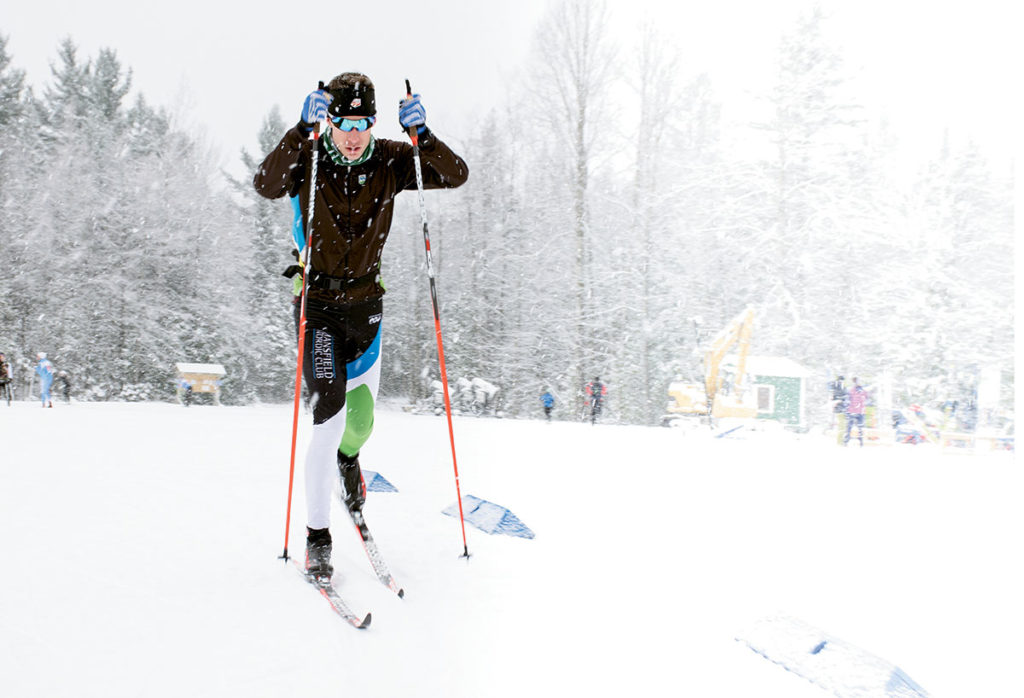
Back Shop is supported by Craft—designing Nordic ski collections worthy of World Champions and Everyday Heroes. craftsports.us
The kick double pole technique is the awkward second-cousin in the classical technique family, often overlooked in favor of more familiar relatives like striding or pure double poling. Like your distant family member, the kick double pole seldom makes appearances at events and gatherings yet is easily noticed in the right situation.

When the terrain is too gradual to stride effectively, yet steep enough to prevent effective double poling, it’s time to utilize the kick double pole.
Skiers primarily use the kick double pole as a transitional technique. When approaching the base of a large climb, moving from a traditional double pole to a kick double pole helps drive a bit more speed into the lower part of a climb before switching completely to striding. Over the top of a hill, going from a stride into a kick double pole helps build speed either into the ensuing downhill or into a flatter double pole section.
It’s easiest to think of this technique as a double poling motion with alternating kicks interspersed before each poling cycle. The basic principles of both striding and double poling apply to the upper and lower body during the kick double pole. Like with all techniques and disciplines, it’s important to not overlook the role that a strong core and good body position play here.
With your upper body, apply poling power with a tempo and arm follow-through appropriate to the terrain: quicker, shorter motions for steeper hills and a longer, more extended tempo for flatter terrain. Be sure not to reach too far forward, as you’ll risk losing engagement of your abdominal and back muscles.
With your lower body, mimic the kicking strategies you’d incorporate on hills of varying gradients. For steeper kick double poling, keep your legs underneath you a bit more during the entire motion. On smoother terrain, don’t be afraid to drive the knees and lower body slightly forward with each stride, so long as you continue to maintain a relaxed spine and engaged hips to keep stable.
As with all technique choices, use of the kick double pole varies on a given course. Stronger skiers in a race might choose to double pole farther up a hill before switching to striding. For other skiers, either racing or skiing recreationally, the kick double pole can provide a great second gear between striding and double poling. This balance between striding and poling distributes the workload more evenly between the body’s sources of propulsion.
Practice when and where to use the kick double pole by trying different techniques on the same part of a trail. Find a section of trail that has some undulating uphill and repeat it four or more times. On the first round, stride the entire hill, even if there are parts that seem too flat. On the second pass, kick double pole the full duration. Note where the technique felt awkward and where it matched the terrain best. On your third lap, double pole the entire section and continue noting how your momentum and power are affected. Once you’ve had a taste of each technique on the same section of trail, piece together all three and use the most appropriate for each section.
Combining different techniques to ski a section of trail gracefully is one of the most enjoyable parts of cross country skiing. With the kick double pole you have a great resource for putting those pieces together.
—
Adam Terko is the head coach of Vermont’s Mansfield Nordic Club and has been skiing competitively (and writing about it) since before Fischer skis had holes in their tips. He’s also the technical editor of Cross Country Skier and writes the how-to column “Back Shop” in each issue.
Subscribe now to the print magazine to read Terko’s latest column and more at crosscountryskier.com/subscribe.